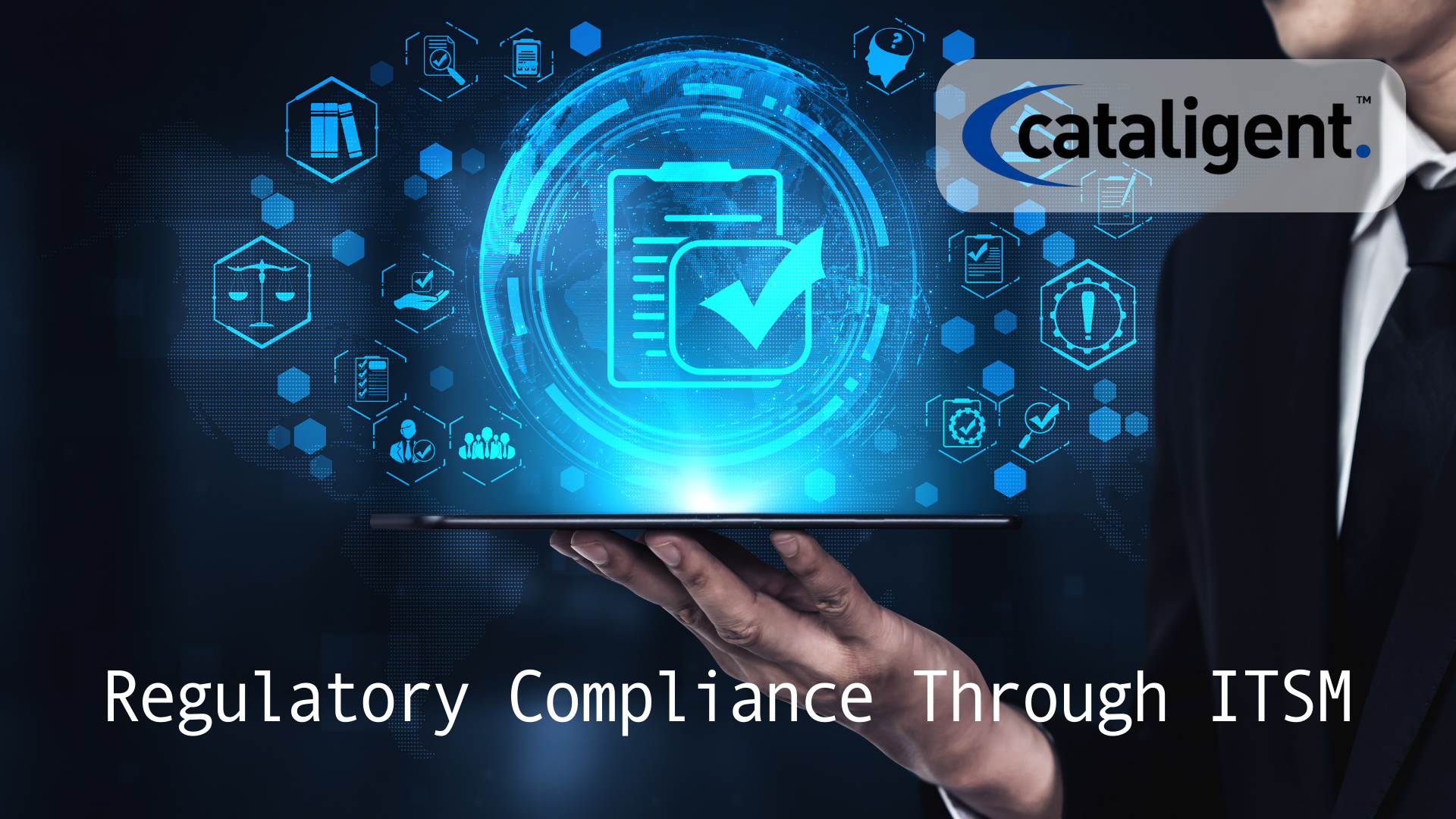In today’s complex regulatory landscape, organizations must ensure compliance with industry standards, government regulations, and internal policies. Failing to meet compliance requirements can result in hefty fines, legal liabilities, reputational damage, and operational disruptions. Information Technology Service Management (ITSM) offers a structured framework that helps organizations achieve and maintain regulatory compliance efficiently and effectively.
Understanding Regulatory Compliance in IT
Regulatory compliance refers to adhering to rules, laws, and guidelines set by regulatory bodies such as:
- GDPR (General Data Protection Regulation)
- HIPAA (Health Insurance Portability and Accountability Act)
- SOX (Sarbanes-Oxley Act)
- ISO/IEC 27001 (Information Security Management Standard)
- PCI DSS (Payment Card Industry Data Security Standard)
These regulations require strict control over data privacy, information security, access management, and auditability—areas where ITSM can significantly contribute by implementing standardized processes, monitoring tools, and effective communication workflows.
How ITSM Supports Regulatory Compliance
1. Structured Processes and Documentation
ITSM frameworks, especially ITIL (Information Technology Infrastructure Library), encourage well-documented processes for managing services, incidents, changes, and assets. This ensures:
- Transparency in IT service delivery
- Traceability and accountability for audits
- Evidence of compliance activities and decision-making processes
Well-maintained documentation also supports knowledge management, which is essential for training and maintaining institutional memory around compliance procedures.
2. Change Management
The Change Management process in ITSM ensures that all changes are:
- Properly authorized and documented
- Assessed for compliance-related risk and impact
- Approved through structured workflows
This supports regulatory compliance by demonstrating strict control over modifications in the IT environment, reducing the likelihood of unauthorized or risky changes that could lead to non-compliance.
3. Incident and Problem Management
ITSM processes help detect, analyze, and resolve incidents and recurring problems. These include:
- Responding to security incidents in line with regulatory requirements
- Tracking root causes for major issues
- Documenting mitigation and preventive measures
This aligns with compliance mandates for incident response, cybersecurity, and corrective actions under standards like GDPR and HIPAA.
4. Access Management
Proper access management is vital for ensuring that only authorized personnel can access sensitive information. ITSM supports:
- Identity and Access Management (IAM) through role-based permissions
- Logging access requests, approvals, and changes
- Managing user lifecycles and privileges
These measures are crucial for compliance with data protection and privacy laws, ensuring organizations maintain secure access control systems.
5. Asset and Configuration Management
Regulatory frameworks often require organizations to know exactly where sensitive data is stored and processed. Using ITSM tools such as Configuration Management Databases (CMDB) enables:
- Accurate tracking of IT assets, including hardware and software
- Monitoring of system configurations and relationships
- Real-time visibility into infrastructure components
This improves asset management, a key requirement in standards like ISO 27001 and PCI DSS.
6. Service Level Management
Establishing and monitoring Service Level Agreements (SLAs) is a core ITSM capability. This helps ensure that:
- IT services meet internal and external compliance standards
- SLA metrics can be used as benchmarks during audits
- There is accountability for response and resolution times
This capability is especially useful for industries with regulatory obligations around uptime, service availability, and performance monitoring.
7. Audit Trails and Reporting
Modern ITSM tools like ServiceNow, BMC Helix, and Jira Service Management offer robust reporting and audit trail functionalities:
- Automated logging of IT activities
- Historical data on changes, incidents, and access
- Customizable dashboards for compliance tracking
These features help demonstrate regulatory audit readiness, a critical aspect of compliance frameworks like SOX.
Benefits of Using ITSM for Compliance
- Reduced Risk of Non-Compliance: Automated workflows, structured approvals, and process standardization minimize human error and regulatory violations.
- Faster Audit Readiness: Centralized documentation and detailed logs streamline compliance audits.
- Improved Security Posture: Integrated risk management and cybersecurity protocols strengthen protection against breaches.
- Operational Efficiency: Embedding compliance activities in routine IT operations avoids duplication and redundancy.
- Cost Savings: Reduces the need for separate compliance software, leveraging existing ITSM platforms.
Best Practices for Leveraging ITSM in Compliance
- Align ITSM Processes with Compliance Requirements: Perform gap analysis to map regulatory controls (e.g., GDPR Articles, HIPAA sections) to ITSM capabilities.
- Regularly Update Policies and Procedures: Ensure ITSM workflows reflect the latest legal and regulatory developments.
- Train Staff on Compliance: Use knowledge management systems and LMS tools to educate IT teams on compliance protocols.
- Use Compliance Dashboards: Implement real-time dashboards that display compliance KPIs, risk scores, and SLA statuses.
- Conduct Regular Internal Audits: Leverage ITSM reports to conduct mock audits and identify gaps before formal assessments.
Real-World Use Cases
- GDPR Compliance: Automating data access requests, implementing audit logs for consent management, and supporting secure data erasure using ITSM tools.
- HIPAA Compliance: Tracking access to Protected Health Information (PHI), enforcing strict change control on health systems, and documenting incident responses.
- SOX Compliance: Managing financial system change requests, ensuring dual approvals, and maintaining change logs for audit validation.
Key Metrics to Monitor
- Number of compliance-related incidents logged and resolved
- Time taken to close compliance issues
- Percentage of policy and process reviews completed
- Audit success rate and gap closure rate
- SLA adherence for compliance-critical services
Conclusion
By integrating regulatory compliance into everyday ITSM operations, organizations can mitigate risks, improve audit outcomes, and foster a culture of accountability. Frameworks like ITIL provide the structure, governance, and tools needed to meet complex regulatory demands. With increasing scrutiny from regulators and growing customer expectations around data protection, leveraging ITSM for compliance is not just a strategic advantage—it is a necessity for sustainable and secure business operations.

